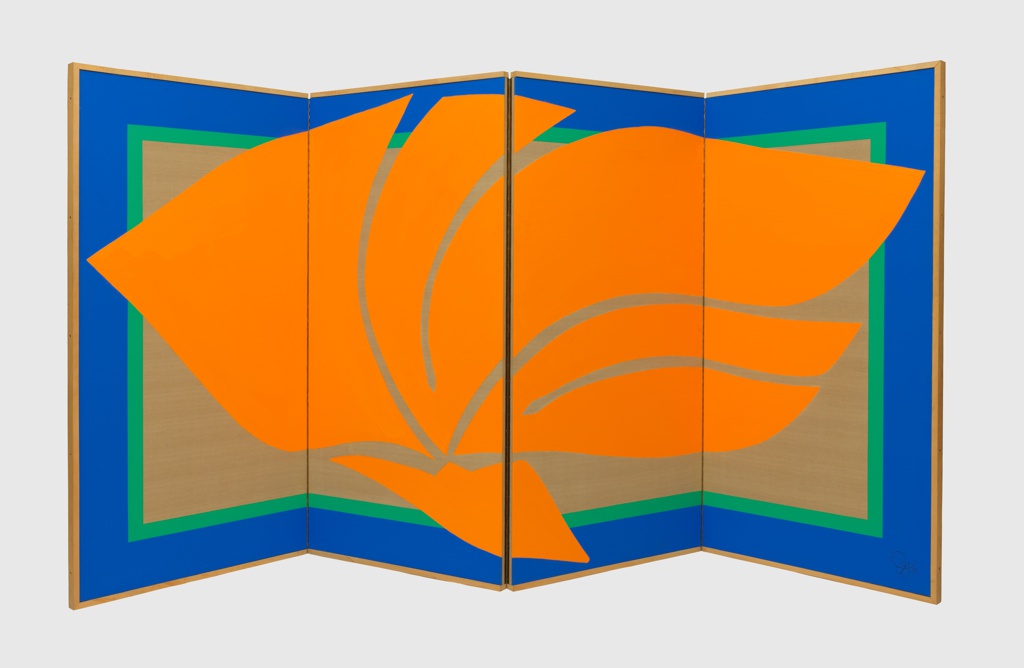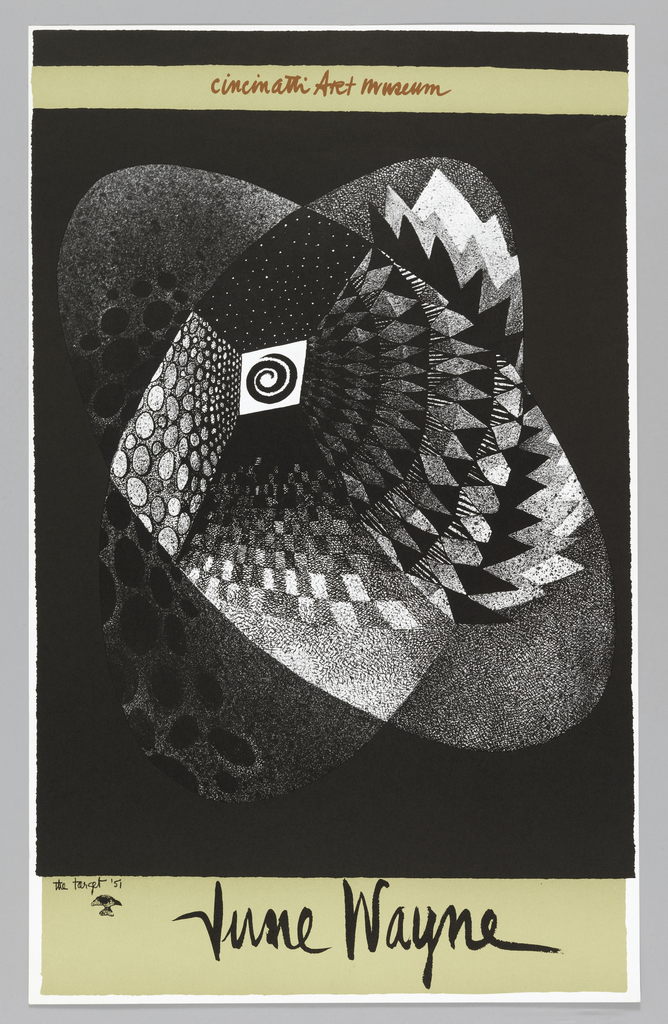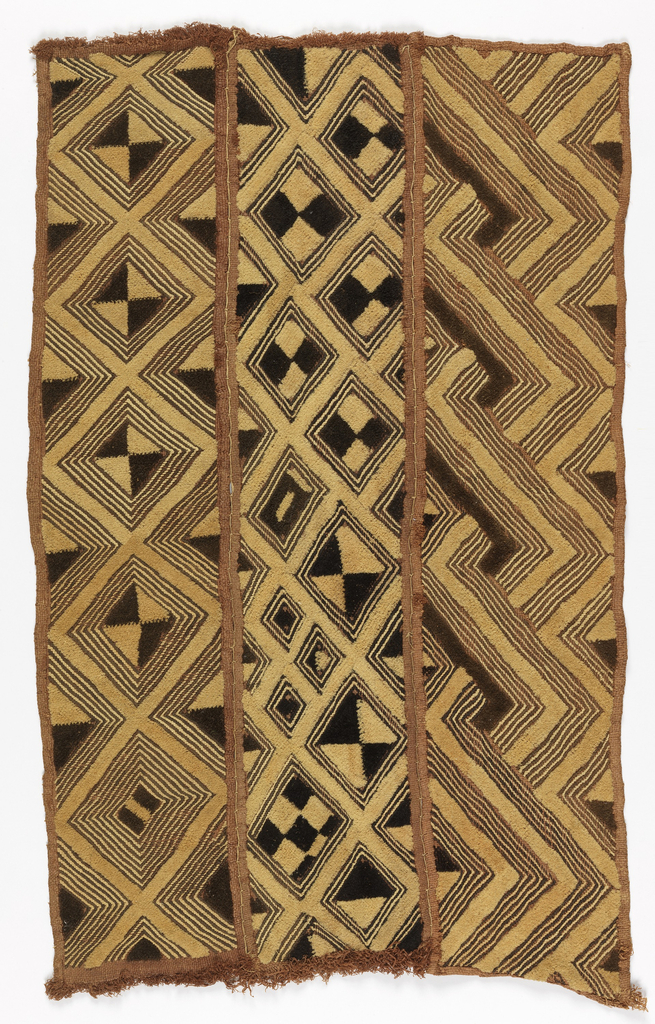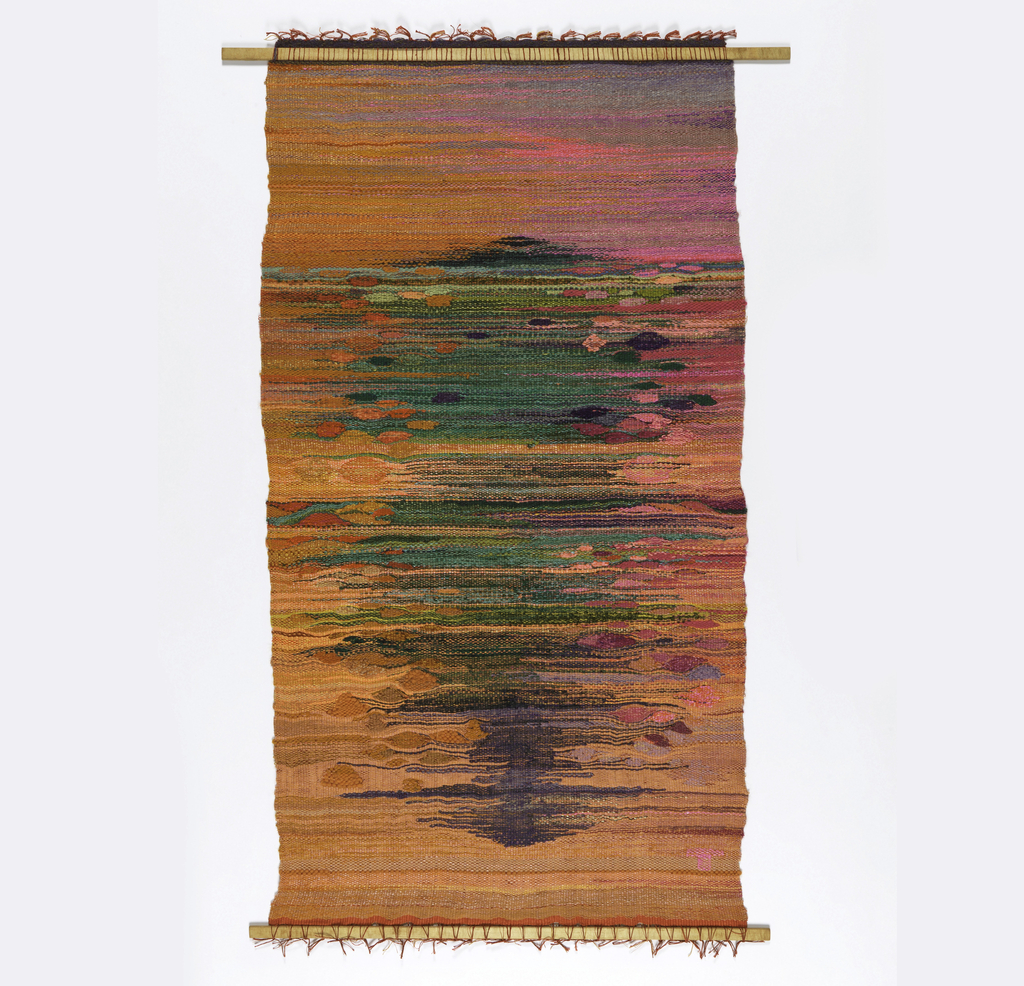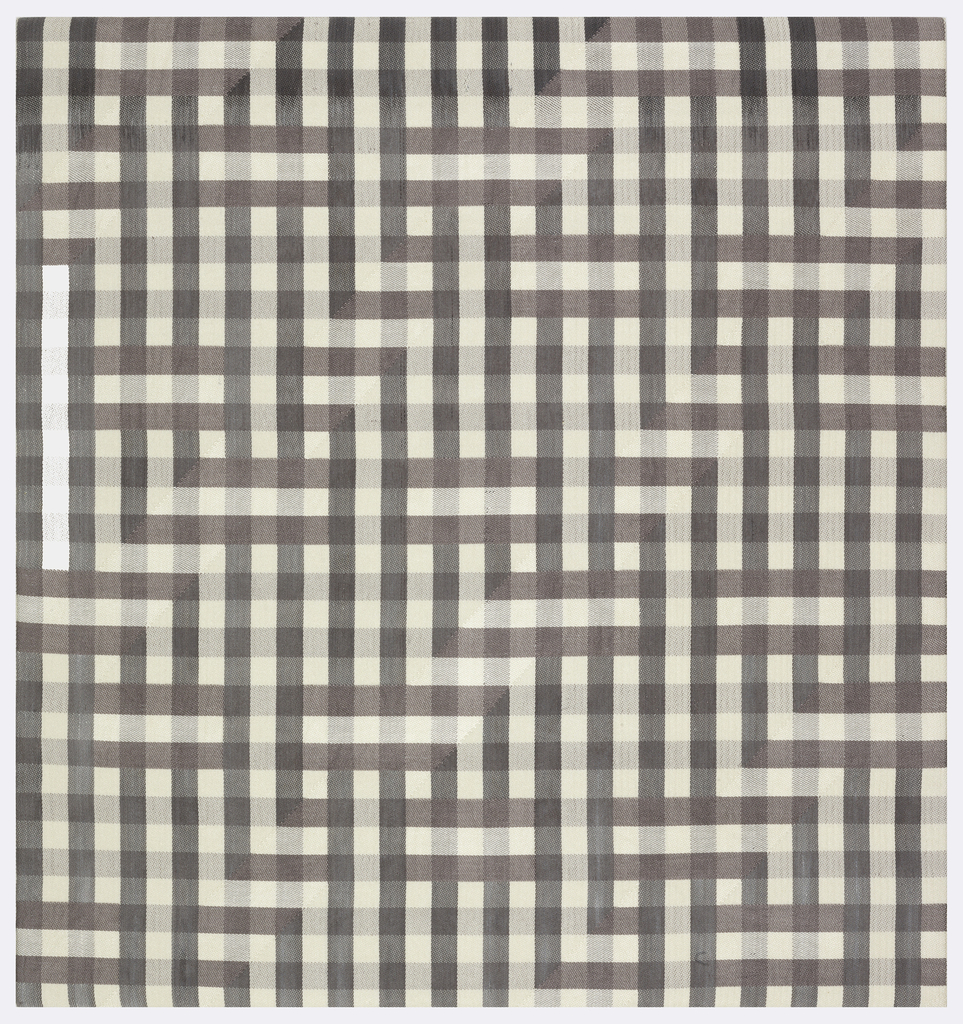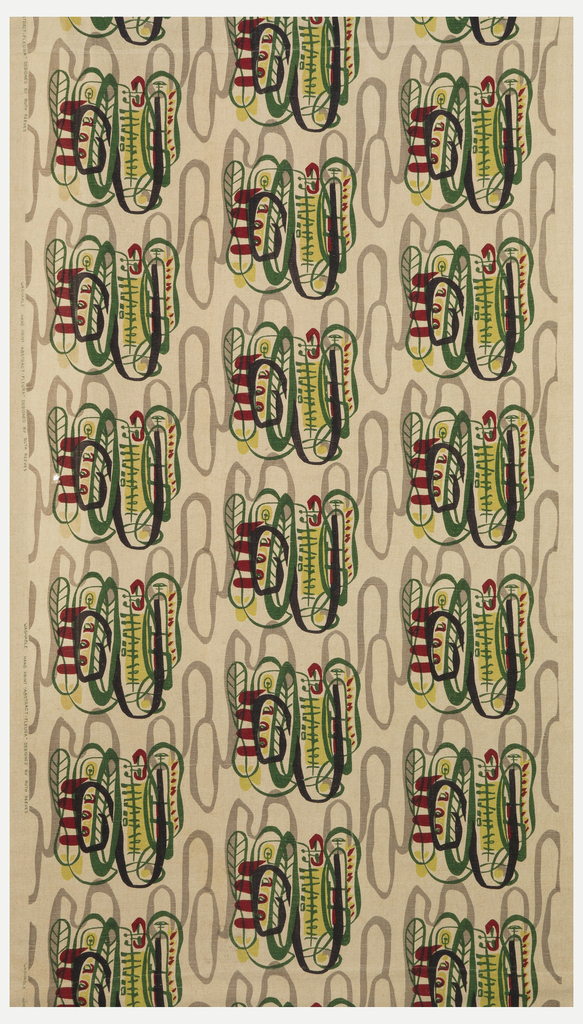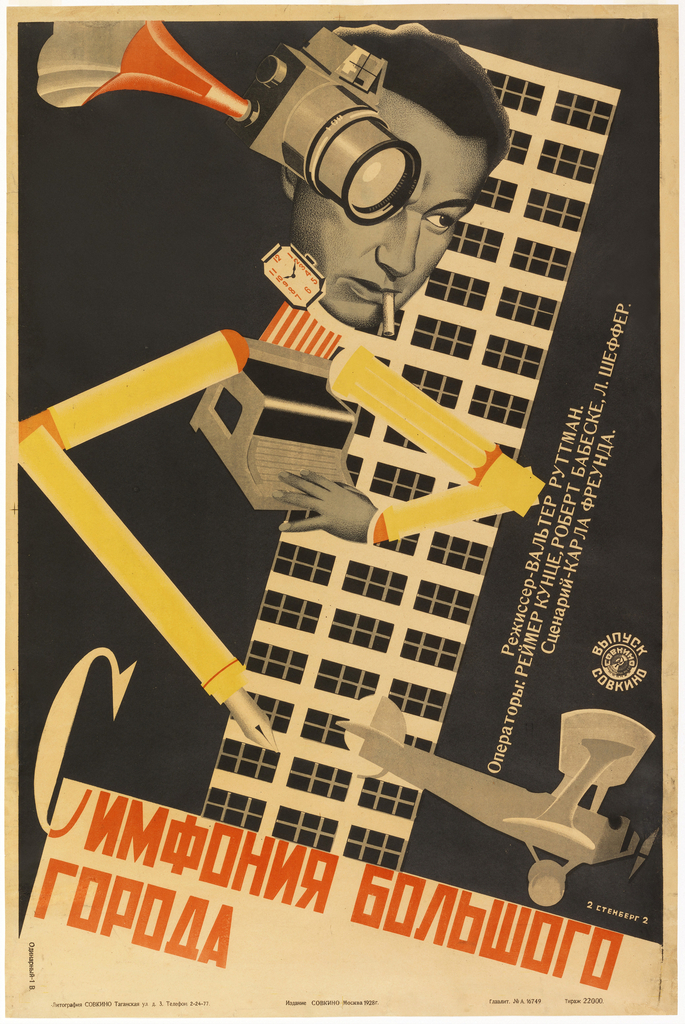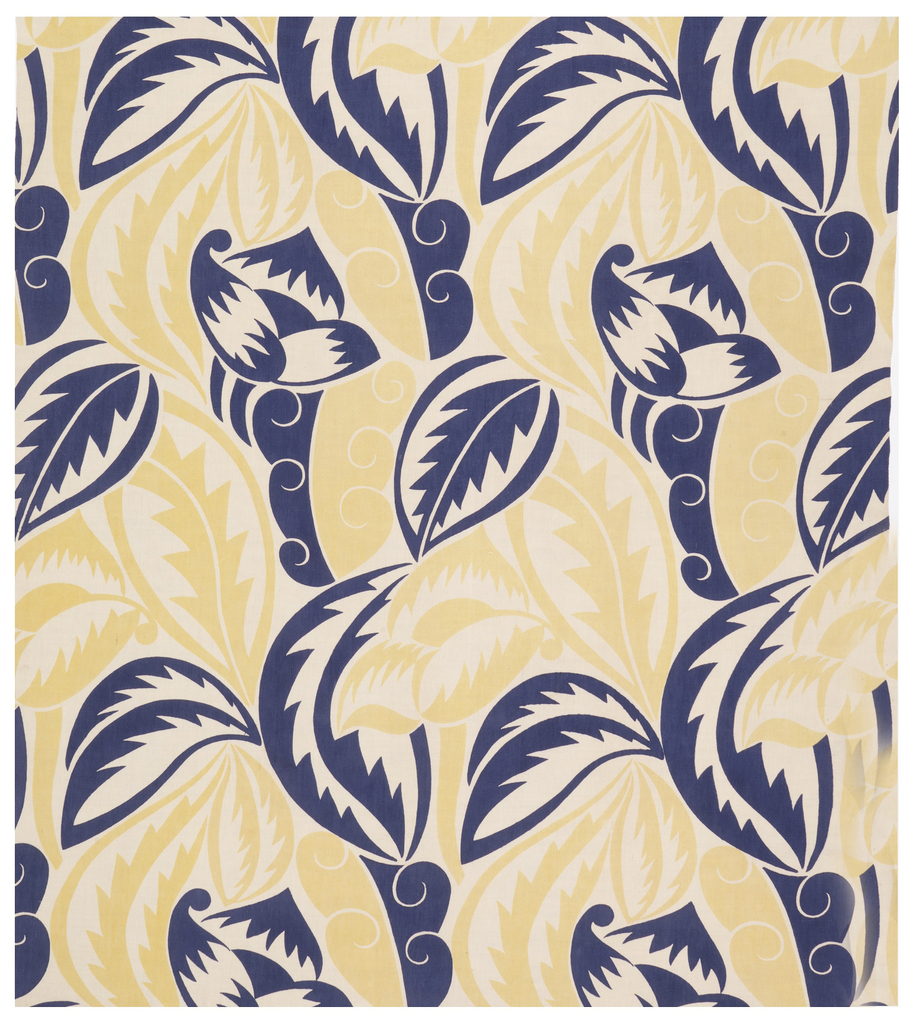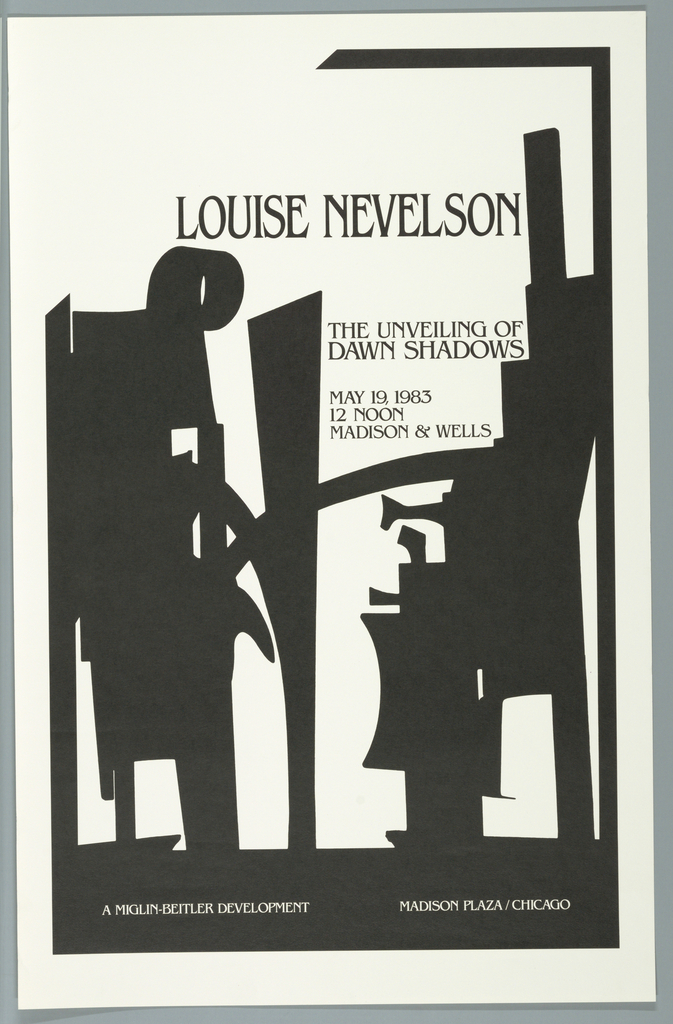Flowing forms of bright orange spread upwards, flickering across the four panels of this folding screen. The work, Fire-Orange, is one of a series of folding screens the American artist Jack Youngerman made beginning in 1978. Fire-Orange exemplifies how Youngerman, who passed away on February 19th at the age of 93, thoughtfully and creatively explored the nature and boundaries...
In celebration of Women’s History Month, March Object of the Day posts highlight women designers in the collection. In September of 1969, the Cincinnati Art Museum hosted a retrospective exhibition dedicated to the work of June Wayne (1918-2011). Although Wayne’s prolific design practice spanned multiple media, today she is especially celebrated for her work as...
The sophisticated visual culture of the Kuba kingdom has been noted since the first explorers visited the region. Abstract geometric patterning is deployed across all media, from scarification of the skin to textiles, basketry, pottery, and even the woven walls of noble dwellings. The devices of color alternation, contrast of surface texture, and play of...
Author: Kathleen Magnan September is New York Textile Month! In celebration, members of the Textile Society of America will author Object of the Day for the month. A non-profit professional organization of scholars, educators, and artists in the field of textiles, TSA provides an international forum for the exchange and dissemination of information about textiles...
Ethel Stein (American, b. 1917) is a Westchester-based artist weaver. Trained as a woodworker, painter and sculptor, Stein became interested in textiles in the 1970s. She began her investigation of the techniques of weaving by studying historic textiles in the collections of the Metropolitan Museum of Art and Cooper Hewitt. Working closely with former curator...
A pioneer of modern design, Ruth Reeves was at the forefront of American textiles throughout her career, perpetually interested in the discovery of a national American voice in design. After studying at Pratt and the San Francisco School of Design, Reeves traveled to Paris, where she lived between 1921 and 1927. In America, the field...
Caitlin Condell discusses this Russian movie poster that utilizes themes of modernity, Constructivism, urban imagery, and the avant-garde found in The Jazz Age: American Style in the 1920s.
Now on view in The Jazz Age: American Style in the 1920s, this Dufy textile proclaims modernity in its abstracted pattern.
As a young child, Louise Nevelson (1899-1988), born Leah Berliawsky, immigrated to the United States from Kiev, then part of the tumultuous Russian Empire (and the capital of present-day Ukraine). She and her family settled in Maine, where she adopted the more American name, Louise. After her 1920 marriage, Nevelson enmeshed herself in the New...
